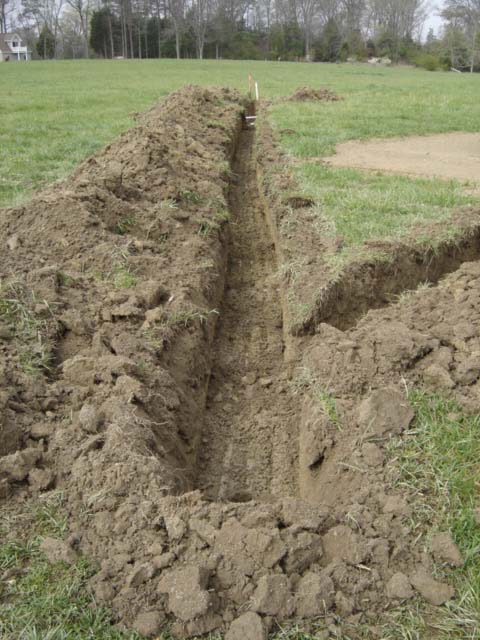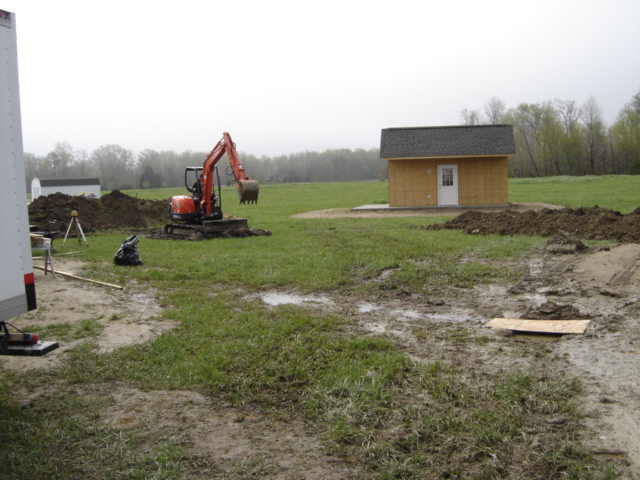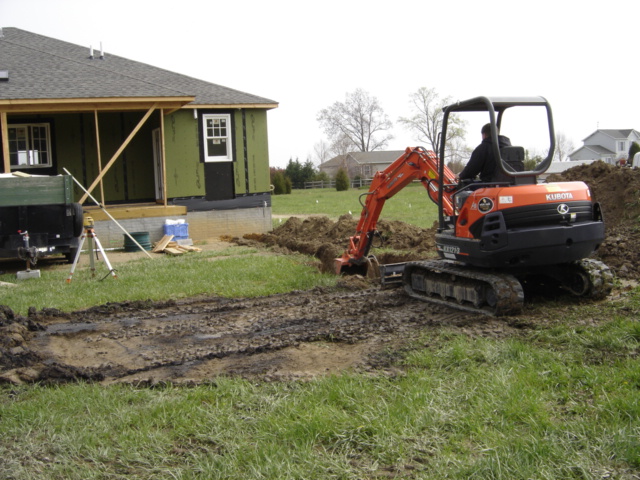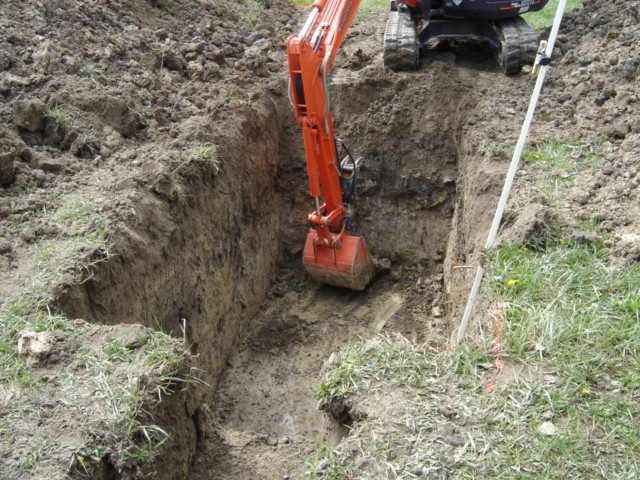Building our new house:
Digging holes in the yard
On 9 - 11 April we did a lot of dirty work -- dug trenches for the septic tank and drain lines. The weather had been nasty for the preceding three days -- rain, drizzle, mist, cloudy, windy, cold. As a result, the ground was soggy. We got our permit from the county health department to install the septic system.
We are installing a conventional, pressurized septic system for waste water disposal.
- Waste water from the house -- toilets, sinks, dishwasher -- flows through drain pipes into a central drain pipe, a 4-inch PVC pipe.
- The main drain pipe runs out through the foundation wall, through a trench about 30 feet long that slopes away from the house.
- The man drain empties into a 1,000-gallon concrete septic tank buried with its top about 3 feet below ground.
- The septic tank then empties into a sealed, 750-gallon concrete tank with an electrical sewage pump installed. When waste water reaches a pre-set level, the pump starts and pumps the waste water through a 4-inch PVC pipe to the corner of our lot, across a common area (about 250 feet) into a septic drain field -- 75 ft X 75 ft with a disbursement box and several perforated drain lines.
- The waste water then leaches into the soil and percolates around where bacteria are neutralized by soil action.
Here are some photos of the holes we dug on 10 April.
This photo shows the trench that will carry the pressurized drain line from the pump tank out to the corner of the property then to the leach field. When the subdivision was established, leach fields were installed, drain lines run to each lot, and water supply lines were installed and run to each lot. At the far end of this trench you see some white spots -- these are the PVC pipe that runs to the leach field. The trench coming in from the right is from the garage where we will have a water heater and a laundry sink.
In this photo you see water standing on the lot. When the house is finished, we will use a bulldozer to re-shape the lot, fill in these low spots, and shape the lot so water drains away. John is operating the small track hoe and is starting to dig the hole for the septic tank. In the right center of the photo you see dark dirt piled up -- that's the trench in the photo above.
In this picture John has started to dig the hole for the septic tank. Notice in front of the bucket on his track hoe is a trench coming from the house -- this will carry the drain line from the house. Notice the laser level on the tripod. John uses this and a sight pole with a laser detector attached to make certain he digs the hole to the correct depth and keeps the bottom of the hole level.
And here's the hole for the septic tank. The trench coming from the bottom of the photo is the trench that will carry the drain line from the house. The long white pole is John's sight pole that he uses with the laser level in the preceding photo to keep the bottom of the hole level and to allow him to measure the depth of the hole.
| Return to new house first page |



